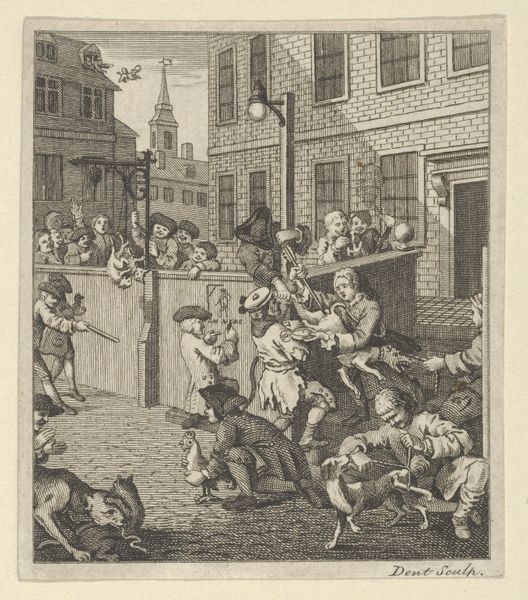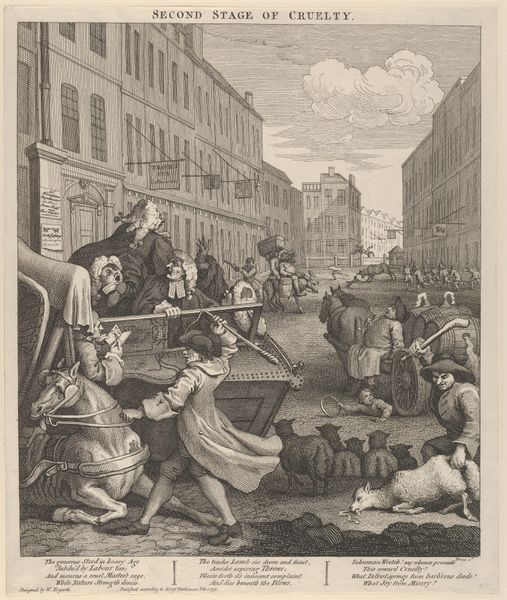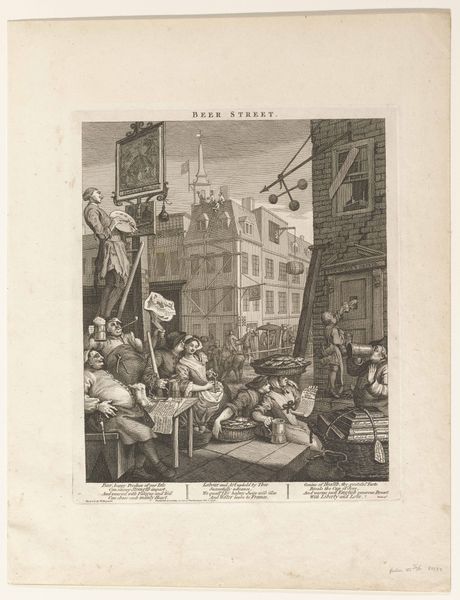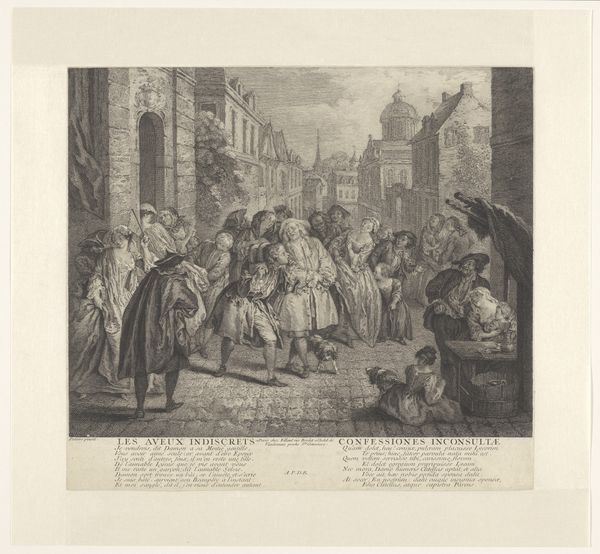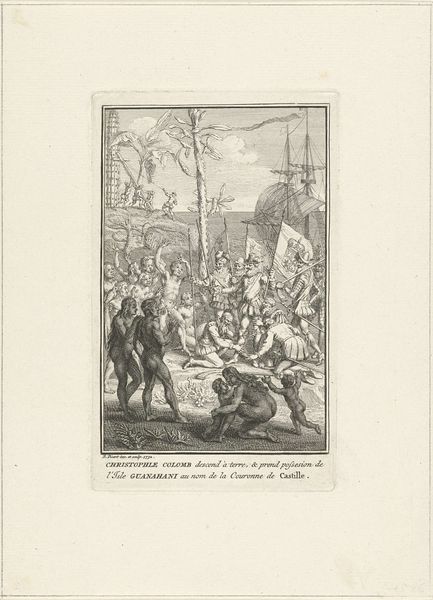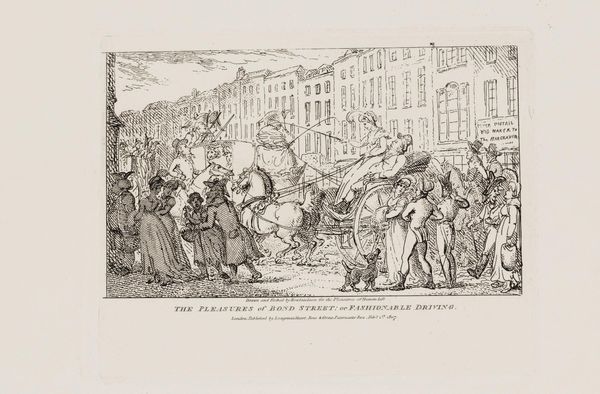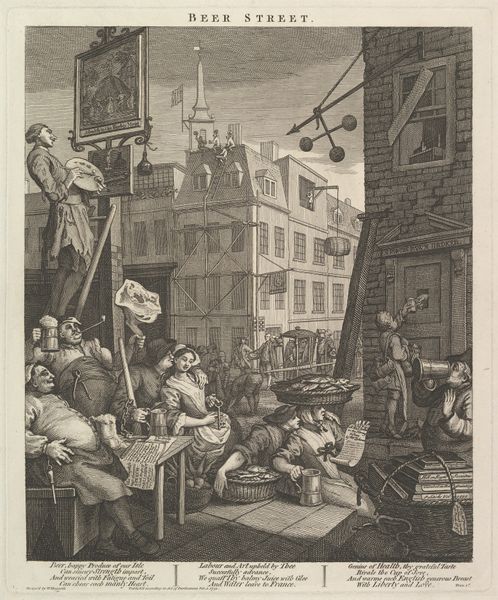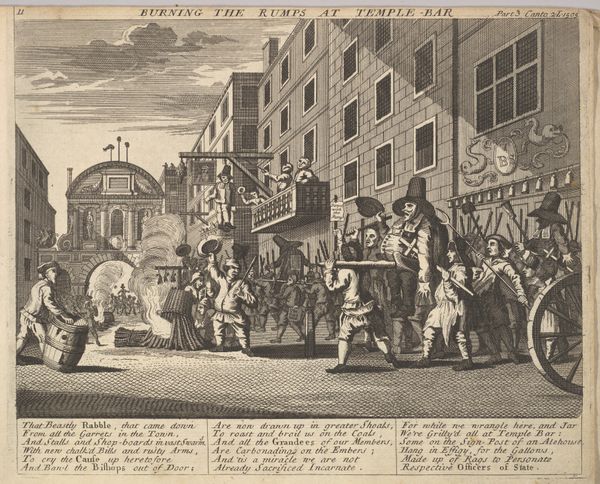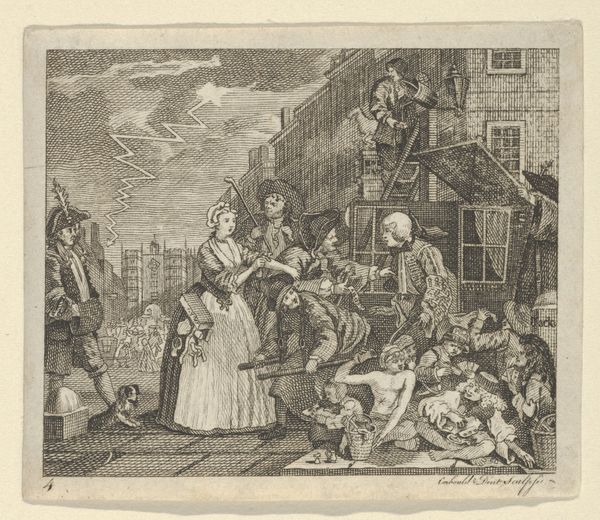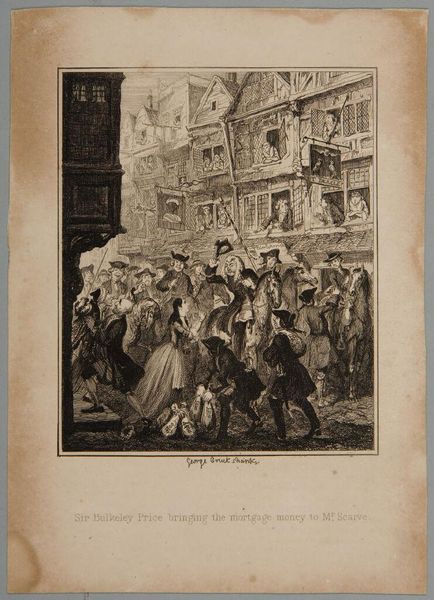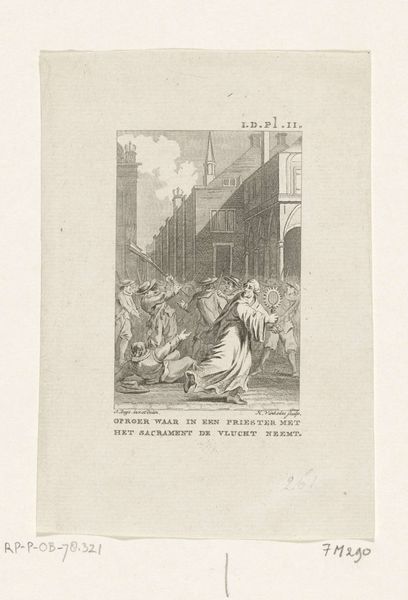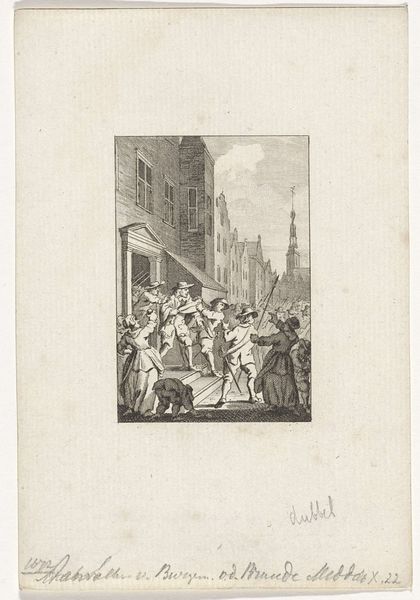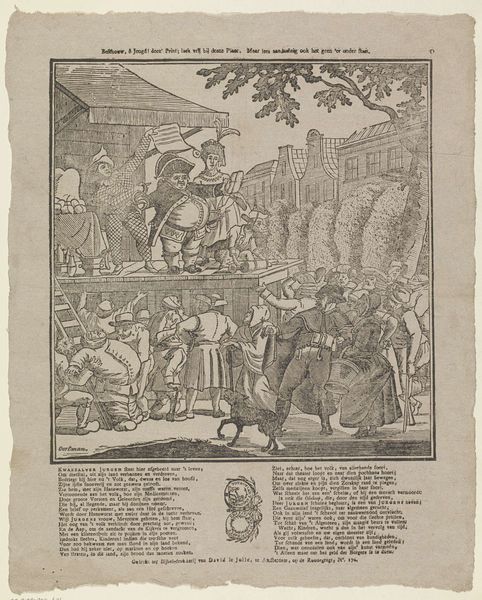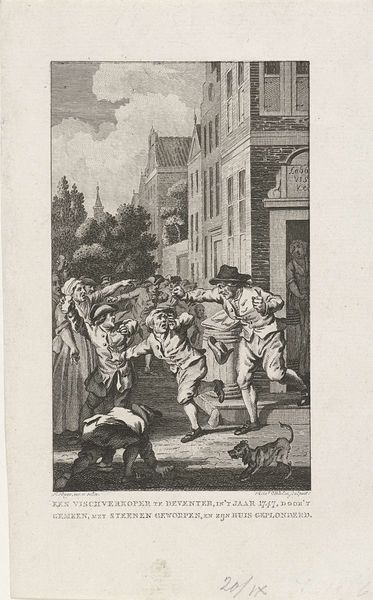
print, etching
#
narrative-art
#
baroque
# print
#
etching
#
genre-painting
Dimensions: 385 mm (height) x 321 mm (width) (plademaal), 433 mm (height) x 362 mm (width) (bladmaal)
Curator: "First Stage of Cruelty" by William Hogarth. Created sometime between 1750 and 1751, this print, done as etching, presents quite a stark scene, wouldn't you say? Editor: Yes, it’s… intensely disturbing. All this pent-up cruelty just exploding outwards. The composition feels very crowded, claustrophobic almost, enhancing that feeling. You get the sense that the composition itself is enacting the horror. Curator: Absolutely. Hogarth's aiming for a gut reaction here. Think about the London he lived in—poverty, gin-soaked streets, widespread indifference to suffering. He believed art should serve a social purpose, to awaken people. "First Stage of Cruelty" is part of a series called "The Four Stages of Cruelty," each print escalating in violence. This one sets the stage. Editor: He definitely doesn't pull any punches. These boys are involved in torturing animals and tormenting the weak. Even that little dog, snapping a bone. Is this about breaking social norms? About challenging perceptions of morality, not just making us squirm? Curator: Exactly! The image aims to highlight social critique through narrative. Hogarth was deeply invested in didacticism, creating art to both entertain and instruct. Each character represents a facet of society failing in compassion and decency. Editor: I get the message loud and clear, and I do feel his heart—and also recognize the debate about sentimentalizing morality. What strikes me, though, beyond all the moral lessons is the technique of print-making, all these delicate lines making something that feels both of a world but elevated from the squalor in Hogarth's world at that time. Curator: An interesting contrast, isn't it? The refinement of the etching itself juxtaposed with the coarse subject matter. The choice of print makes the images accessible too – copies could be distributed and discussed widely in society, sparking dialogues just like this one, hopefully promoting the "cure". Editor: This reminds me that our current media environments are awash in comparable stuff—violence and depravity. Is this a kind of hall-of-mirrors situation where we get stuck endlessly reflecting on suffering instead of, as he intended, moving beyond? Curator: Possibly, but Hogarth’s skill, artistry and the way in which "First Stage of Cruelty" invites a level of questioning, that alone is commendable and separates it from gratuitous representation of the kind we might encounter online every day. Editor: Absolutely. He makes us look, really look, at what's ugly. A discomforting image with lasting relevance. Curator: It is a powerful statement, then and now, hopefully offering an opportunity to contemplate how our own actions ripple outwards.
Comments
No comments
Be the first to comment and join the conversation on the ultimate creative platform.
